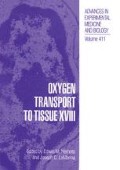Abstract
Oxygen is essential for normal cardiac function and plays an important role in cardiac regulation. Electron paramagnetic resonance (EPR) oximetry appears to have some significant advantages for measuring oxygen tension (pO2) in the beating heart. This study presents the serial measurement of myocardial pO2 by EPR oximetry in the isolated crystalloid perfused heart during treatment with different cardioactive drugs: dobutamine, metoprolol, verapamil, vasopressin, and Né-Nitro-L-Arginine Methyl Ester (L-NAME). Baseline myocardial pO2 was 176±14 mmHg (mean±S.E.). Myocardial capillary density in the intact contracting heart was calculated to be 2300±100 mm−2, using local myocardial pO2 and a cylindrical model for oxygen diffusion in tissue. Each drug had characteristic effects on myocardial pO2, myocardial oxygen consumption (MVO2), and capillary density. Metoprolol and verapamil increased myocardial pO2 by 51% and 18%, respectively, dobutamine decreased myocardial pO2 by 84% while vasopressin and L-NAME had no significant effect on myocardial pO2. Metoprolol and verapamil decreased MVO2 by 9% and 56%, respectively, while dobutamine increased MVO2 by 59%. A quantitative comparison of effects on the capillary bed based on changes in myocardial pO2 and MVO2 was made. Metoprolol and verapamil had opposite effects on the capillary bed. Verapamil decreased myocardial capillary density by 39%, while capillary density increased by 10% (n.s.) with metoprolol. Data following perfusion without drug is also presented. We conclude that: 1) The application of EPR oximetry with LiPc provides dynamic evaluation of local myocardial pO2 in the contracting heart. 2) Using a cylindrical model of oxygen delivery and diffusion in tissue, these data may be used to describe the changes of capillary density during pharmacological interventions.
Access this chapter
Tax calculation will be finalised at checkout
Purchases are for personal use only
Preview
Unable to display preview. Download preview PDF.
References
Relationship between carbohydrate and lipid metabolism and the energy balance of heart muscle. Neely JR, et al. Ann Rev Physiol, 1974;36:413–459.
Quantification of O2 consumption and arterial pressure as independent determinants of coronary flow. Vergroesen I, et al. Am J Physiol, 1987;252:H5435–H5530.
Oxygen in mammalian tissue:methods of measurement and affinities of various reactions. Vanderkooi J M, et al. Am J Physiol, 1991;260:C1131–C1150.
Measurement of oxygen concentrations in the intact beating heart using EPR spectroscopy: A technique for measuring oxygen concentrations in situ. Zweier JL, et al. J Bioener Biomem,1991;23(6):855–871.
The use of EPR for measurement of concentration of oxygen in vivo in tissues under physiologically pertinent conditions and concentrations. Swartz HM, et al. Adv in Exp Med and Biol, 1992;317:221–228.
Myocardial Oxygen Tension and Relative Capillary Density in Isolated Perfused Rat Hearts. Friedman BJ, et al. J Molec Cell Cardiology, 1995 in press.
EDRF coordinates the behavior of vascular resistance vessels. Griffith TM, et al. Nature, 1987;329:442–445.
Mechanisms of disease. Franklin HE. New England J Med, 1982;307(26): 1618–1627.
Vasopressin, renin and norepinephrine level before and after failure due to idiopathic dilated cardiomyopathy. Rakusan GA, et al. Am J Cardiol, 1986;58: 300–303.
Effect of vasopressin on capillary recruitment and coronary blood flow in anesthetized rabbit. Funk W, et al. Can J Physiol Pharmacol, 1991;69:170–175.
Calcium Antagonist and Microperfusion. Tillmans H, et al. Drugs, 1991;42(Suppl. 1).
Changes in myocardial capillary diffusion capacity during infusion of vasoactive drugs. Whlander H, et al. Acta Physiol Scand, 1993;147:49–58.
Septet spin state in lithium phthalocyanine 1 radical compound. Turek P, et al. Mol Crys Liq Cryst, 1989;176:535–542.
Lithium phthalocyanine: A probe for EPR oximetry in viable biological systems. Liu KJ, et al. Proc Natl Acad Sci USA, 1993;90:5438–5442.
The number and distribution of capillaries in muscles with calculations of the oxygen pressure head necessary for supplying the tissue. Krogh A. J Physiol (Lond), 1919;52:409–415.
The supply of oxygen to the tissues and the regulation of the capillary circulation. Krogh A. J Physiol (Lond), 1919;52:457–474.
Die Sauerstoffdrucke im Herzmuskelgewebe. Thews G. Pfluger Arch, 1962;276:166–181.
Determinants of tissue oxygen tension. Kety SS. Fed Proc, 1957;16:666–670.
LV oxygen consumption and pressure-volume area: role of norepinephrine and verapamil. Chung N, Am J Physiol, 1991;261(1 Pt2):H77–H82.
Effect of metoprolol on left ventricular function in rats with myocardial infarction. Cherng WJ, et al Am J Physiol, 1994;266(2 Pt 2):H787–H794.
Effect of intracoronary infusions of amrinone and dobutamine on segment shortening, blood flow and oxygen consumption in in situ canine hearts. Crystal GL, et al. Anesthesia and analgesia, 1994;76(6): 1066–1074.
Direct measurement of intercapillary distance in beating rat heart in situ under various conditions of O2 supply. Martini J, et al. Microvas Res, 1969;1:244–256.
Microcirculation of the epimyocardial layer of the heart. I. A method for in vivo observation of the microcirculation of superficial ventricular myocardium of the heart and capillary flow pattern under normal and hypoxic conditions. Steinhausen M, et al. Pflugers Arch, 1978;378:9–14.
Differential response of large and small coronary arteries to nitroglycerine and angiotensin. Cohen MV, et al. Circ. Res. 1973;33:445–453
Hemodynamic effects of infused arginine vasopressin in congestive heart failure. Goldsmith SR, et al. J Am Coll Cardiol, 1986;8:779–773.
Role of vasopressin in cardiovascular and blood pressure regulation. Abboud FM, et al. Blood vessel, 1990;27(2–5):106–115.
L-NAME, nitric oxide and jejunal motility, blood flow and oxygen uptake in dogs. Alemayehu A, et al. British journal of pharmacology, 1994:111(1):205–212.
Changes in myocardial capillary diffusion capacity during infusion of vasoactive drugs. Wahlander H, et al. Acta Physiol Scand. 1993;147:49–58
Oxygen supply to tissues: the Krogh model and its assumptions. Kreuzer F. Experientia Basel, 1982;38:1415–1426.
Analysis of oxygen delivery and uptake relationships in the Krogh tissue model. Schumacker PT, et al. J Appl Physiol, 1989;67:1234–1244.
Author information
Authors and Affiliations
Editor information
Editors and Affiliations
Rights and permissions
Copyright information
© 1997 Springer Science+Business Media New York
About this chapter
Cite this chapter
Grinberg, O.Y., Grinberg, S.A., Friedman, B.J., Swartz, H.M. (1997). Myocardial Oxygen Tension and Capillary Density in the Isolated Perfused Rat Heart During Pharmacological Intervention. In: Nemoto, E.M., et al. Oxygen Transport to Tissue XVIII. Advances in Experimental Medicine and Biology, vol 411. Springer, Boston, MA. https://doi.org/10.1007/978-1-4615-5865-1_21
Download citation
DOI: https://doi.org/10.1007/978-1-4615-5865-1_21
Publisher Name: Springer, Boston, MA
Print ISBN: 978-1-4613-7689-7
Online ISBN: 978-1-4615-5865-1
eBook Packages: Springer Book Archive

